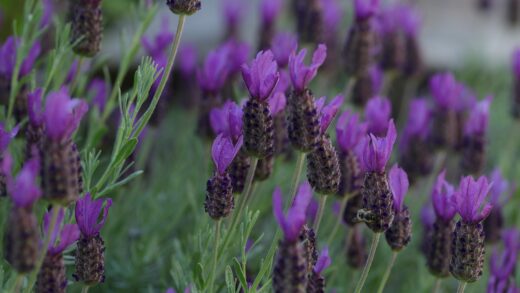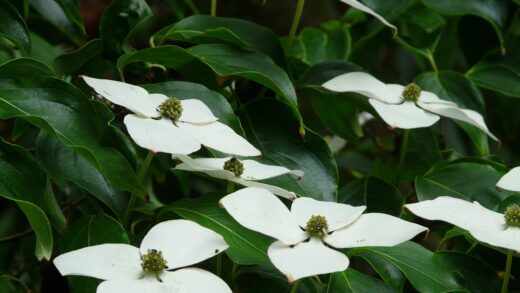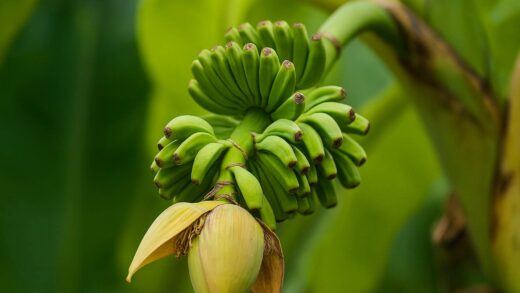Pruning is the most crucial maintenance activity for anyone growing Virginia creeper. This plant’s formidable vigor and rapid growth rate are its greatest assets for quickly covering structures, but this same characteristic means it can quickly become unruly and invasive if not managed with regular, strategic trimming. Far from being a mere chore, pruning is the primary tool for controlling the vine’s size, directing its growth, and maintaining its health and appearance. A proactive and confident approach to pruning ensures that the vine remains a beautiful garden feature rather than a destructive force.
The primary goals of pruning
The foremost goal of pruning Virginia creeper is control. Without regular intervention, the vine can easily grow to cover windows, block doorways, invade gutters and rooflines, and overwhelm neighboring plants. The primary pruning task is therefore containment: trimming the vine back to keep it within its intended boundaries. This is not about creating a formal, manicured shape but rather about respecting the architectural and botanical limits of its space. Regular trimming prevents the vine from causing structural damage or becoming a nuisance.
A second important goal is to maintain the health and vigor of the plant. Pruning involves the removal of any dead, damaged, or diseased wood. Dead stems are not only unsightly but can also provide an entry point for pests and diseases. Removing them cleans up the plant’s appearance and eliminates potential health risks. Thinning out overly dense or tangled sections of the vine also improves air circulation through the foliage, which is a key preventative measure against fungal diseases like powdery mildew.
Pruning can also be used for rejuvenation. Over time, an older vine can become overly woody at its base with all the new, leafy growth occurring at the top, leaving the lower portions bare and unattractive. A hard “renovation” prune, where the main stems are cut back severely, can stimulate a flush of new growth from the base of the plant. This rejuvenates the vine, restoring lush foliage coverage from the ground up and breathing new life into an old, tired specimen.
Finally, pruning is a tool for directing growth and improving the vine’s aesthetic. By making selective cuts, a gardener can encourage the vine to fill in bare spots or guide it to grow more thickly in certain areas. For example, by cutting a long, unbranched stem back to a bud, you can encourage it to branch out and create a denser screen. This allows for a degree of artistic control, shaping the vine’s development to better suit its location and the overall garden design.
More articles on this topic
The best time of year for pruning tasks
The timing of pruning depends on the type of cut being made. Light trimming and maintenance to control the vine’s spread can and should be done throughout the entire growing season, from spring through autumn. As soon as you see a shoot heading towards a window, a gutter, or onto a neighboring property, it should be snipped back. This frequent, light pruning is far more manageable than dealing with a massive, overgrown vine at the end of the season. A little and often approach is the key to easy maintenance.
The best time for major structural pruning and renovation is during the plant’s dormant season, in late winter or very early spring before new growth begins. At this time, all the leaves have dropped, revealing the entire woody framework of the vine. This clear view allows you to easily identify any dead or damaged wood, assess the overall structure, and make well-informed decisions about which main stems to remove or cut back. Pruning during dormancy is also less stressful for the plant, as it is not actively growing.
Pruning in late winter or early spring also has the advantage of stimulating a strong burst of new growth as soon as the weather warms up. The plant’s energy reserves, stored in the roots and remaining stems, will be channeled into the remaining buds, resulting in a vigorous and healthy flush of new foliage that will quickly cover the pruning cuts. Avoid doing major pruning in the autumn, as this can encourage new growth that will not have time to harden off before winter and may be killed by frost.
It is also important to consider the plant’s aesthetic cycle. Virginia creeper is grown for its foliage, not its flowers or fruit, which are inconspicuous. Therefore, unlike with flowering vines, there is no risk of accidentally removing the wood that will produce the season’s main display. Any pruning done during the dormant season will not sacrifice the summer foliage or the spectacular autumn color; in fact, by encouraging healthy new growth, it often enhances it.
More articles on this topic
Techniques for routine maintenance pruning
Routine maintenance pruning is the ongoing task of keeping the vine in check during the growing season. The primary tool for this job will be a sharp pair of hand pruners or secateurs. The technique is simple: identify any stems that are growing outside their designated area and follow them back to a suitable cutting point. This might be back to a junction with a larger stem or back to a leaf node (the point where a leaf joins the stem).
When making a cut, aim for a clean slice without crushing the stem. For general trimming, the exact location of the cut is not overly critical, but cutting just above an outward-facing bud or leaf can help direct the subsequent new growth away from the area you are trying to keep clear. This is a subtle but effective way to guide the plant’s development over time. Regularly walk around the vine, inspecting it from all angles to catch errant shoots early.
One of the most important areas to monitor is around the structural elements of a house. Pay close attention to gutters, eaves, roof tiles, window frames, and ventilation grilles. Virginia creeper can quickly work its way into small crevices, and its strong stems can dislodge materials and cause significant damage over time. Similarly, keep the vine trimmed well clear of any wires or cables. A proactive approach here can prevent costly repairs in the future.
When removing growth from a surface like a brick wall, be aware that the adhesive pads of the tendrils will remain stuck to the surface even after the stem is cut. These pads are very difficult to remove without causing damage to the surface. It is often best to leave them in place; they will eventually weather and fade over time. Trying to scrape or scrub them off can damage brick mortar or pull paint from wooden surfaces.
Executing a hard prune for rejuvenation
There may come a time when a Virginia creeper has become so overgrown, woody, and tangled that routine trimming is no longer sufficient. It may have a large, bare base or have grown far beyond its intended space. In such cases, a hard or renovation prune is the best course of action. This is a drastic measure, but the vine is incredibly resilient and responds very well to being cut back hard, often growing back with renewed vigor and a much-improved appearance.
This task should be undertaken in late winter or early spring while the plant is fully dormant. Using a sturdy pair of loppers or a pruning saw, you can cut the main, thick stems back to just a few feet from the ground. It may seem extreme, but it is the most effective way to reset the plant. When making these cuts, select a few of the strongest, healthiest-looking main stems to form the new framework and cut them back to a height of two to five feet. All other weaker or poorly placed stems can be removed completely at ground level.
After performing such a hard prune, the vine will require some care to support its recovery. In the spring, as new growth begins to emerge from the cut stems and the base, apply a balanced, slow-release fertilizer or a generous top-dressing of compost around the base of the plant. This will provide the nutrients necessary to fuel the rapid growth of new shoots. Ensure the plant is well-watered during its first season of regrowth, particularly during any dry spells.
As the new shoots begin to grow, you can select the most vigorous and well-placed ones to train onto the support structure, creating the foundation for the new, revitalized vine. Rub off or prune away any new shoots that are growing in undesirable directions. This is a perfect opportunity to re-establish the vine with a better structure, guiding its growth from the very beginning to prevent the problems of the past and ensure it grows where you want it to.


















